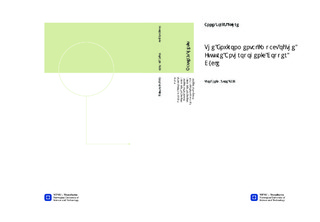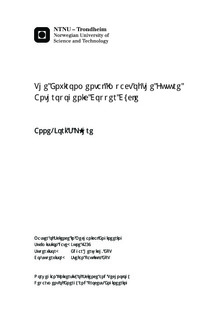| dc.description.abstract | This master`s thesis has discussed two problems of modern society; shortage of copper resources and an increase of electricity use and global warming potential (GWP) from copper production in the future. Unlike most studies regarding environmental impacts from copper production, this study is; comprehensive considering that it includes a dynamic life cycle and is forward-looking regarding a number of factors which have high relevance for the result. The methodology of life cycle analysis (LCA) is utilized together with scenario building, and scenario and sensitivity analysis. The scenario and sensitivity parameters utilized in the analyses are based on the scenario building, which has in hindsight shown to have been conducted with errors. This should be taken into consideration when reading the results for electricity use and GWP for a certain year. The results are on the other hand correct if one sees them in relation to the scenario and sensitivity parameters utilized. The central results of this master thesis follow:To extend copper depletion time beyond 2050 requires action. A medium in-use stock growth and high end-of-life collection and recovery rate increase could be mentioned as initiatives. Regarding direct electricity intensity of primary copper production, it will increase in the future since a declining ore grade is expected. With an ore grade of 0.41, the estimated energy intensity is 7.1 kWh/ kg refined copper. The increase compared to today is not as crucial as expected by others (200-700 %), but remarkably high for mining and beneficiation (i.e. 66 %). The rate of environmentally cruciality, due to an increase of the demand in electricity, will increase in the future as the energy-ore grade relation is not linear, but negatively exponential. On the other hand, the annual generated GWP from global copper production is dependent of a) the GWP-intensity (kg CO2-eq. /kg) and b) the annual copper demand. It is expected to increase from today`s 80 MT CO2-eq. to 290 MT CO2-eq. (demand sensitivity parameter for 2050), or 390 MT CO2-eq. (demand, ore grade and stripping ratio parameter values for year 2050). Extended producer- and consumer responsibility aiming to decrease the copper demand is essential to moderate or decrease the annual GWP caused by the copper production. The less the copper demand increase is, the less the GWP increase is. However, actions aiming to increase the recycling efficiency and making the energy mix less GWP-intensive will be almost equally effective, or in some cases more effective. The rate of moderation could be in the order of magnitude 100-120/200-220 MT CO2-eq. (less than MT 290/390 CO2-eq.).Globally, society has a goal to reduce the annual generated GWP. This study has observed that the GWP-intensity of copper production and annual generated GWP caused by copper production is expected to increase. That increase should be compensated in other industries if society`s goal is to be reached. A solution might be to use copper more wisely - like an investment. Trying to reduce the generated GWP caused by other industries, e.g. the electricity industry might be a place to start. A reduction in generated GWP caused by the electricity industry is solved by investing in e.g. wind mill parks. On the other hand, the renewable electricity industry demands more copper per kWh produced than the conventional electricity industry, so if we should invest in less emission intensive electricity in the future, an increased RIR is important to extend copper depletion time.The fact that copper will be more CO2-intensive, and emissions will rise, contrary to what is needed to curb global warming are very policy relevant. New updated information and interesting observations concerning the environmental aspect of copper production are constantly published. Feeding policy makers with the most recent research, and introducing them to precautionary actions to avoid future issues would probably change the way policy makers think regarding the copper cycle, copper production and how we use it today. For example, introducing qualitative and quantitative sectorial targets, and introducing emission trading where the emissions are addressed to the consumer instead of the producer, might change the way policy makers think. This might be crucial to reach society`s global goal of reducing the annual GWP. | nb_NO |

